Index
Visiting Berlengas will naturally imply a visit to the small city of Peniche, with about 28,000 inhabitants, surrounded by the sea that marked its birth and growth.
In addition to the town, local places will not fail to interest the traveler, such as Cabo Carvoeiro and the famous beaches of Peniche, which provide an excellent vacation for those seeking the sun.
Peniche and Berlengas are located in the so-called Western Region, an area of questionable definition that lies in the coastal area north of Lisbon. It is deeply marked by the Atlantic Ocean, with beautiful beaches and dynamic agricultural and fishing activity.
Peniche is the gateway to the Berlengas archipelago, and the ocean dominates the city in all aspects.
Curious episodes mark the history of Peniche:
- It has suffered numerous pirate attacks over the centuries.
- It was a shelter for refugees from the Boer War in the early 20th century,
- It came to be occupied by invading troops.
- German and Austro-Hungarian prisoners captured during World War I were held here.
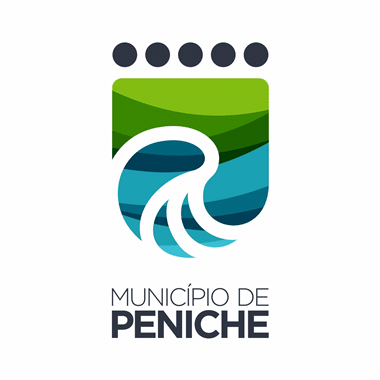
Peniche Top 4
1- The Peniche Fortress and the Municipal Museum
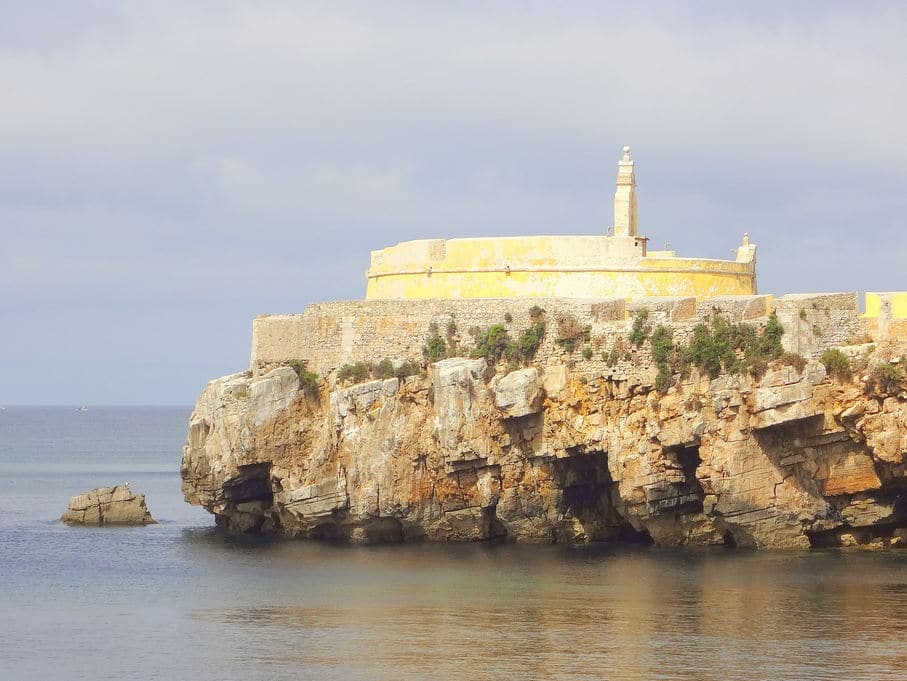
2- Cabo Carvoeiro and the Balcón de Pilatos
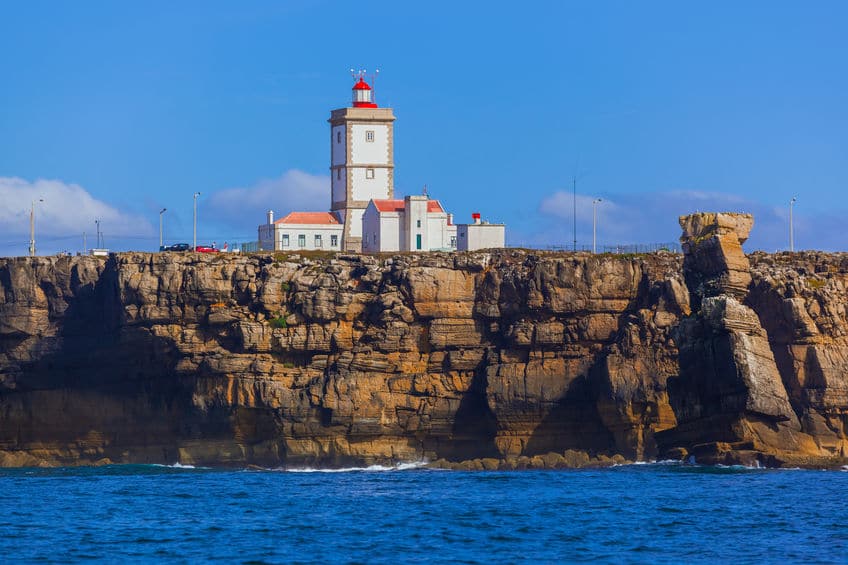
3- The Convent of Nossa Senhora dos Remédios
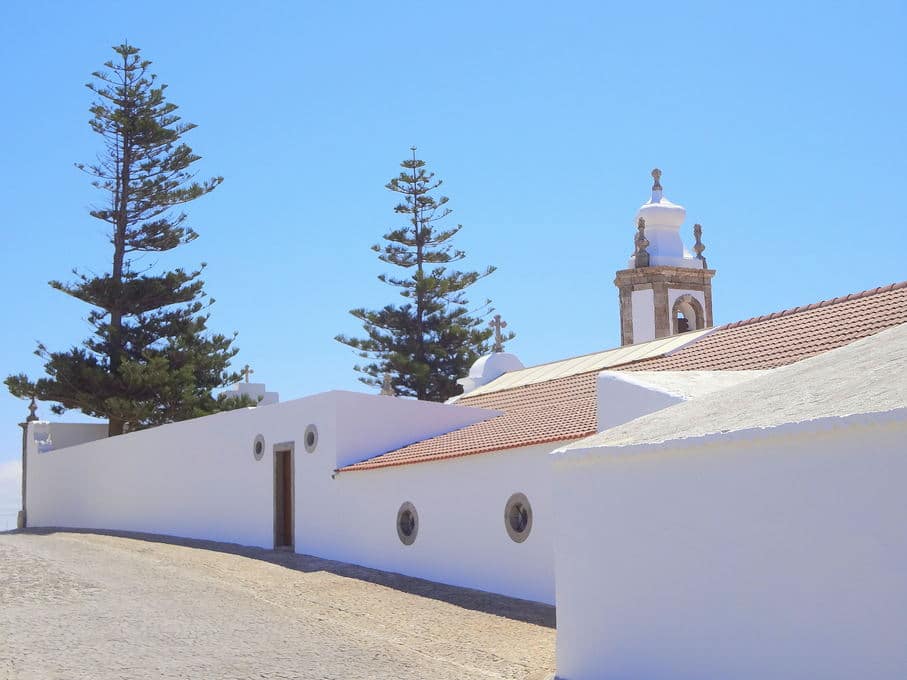
4- The Beaches
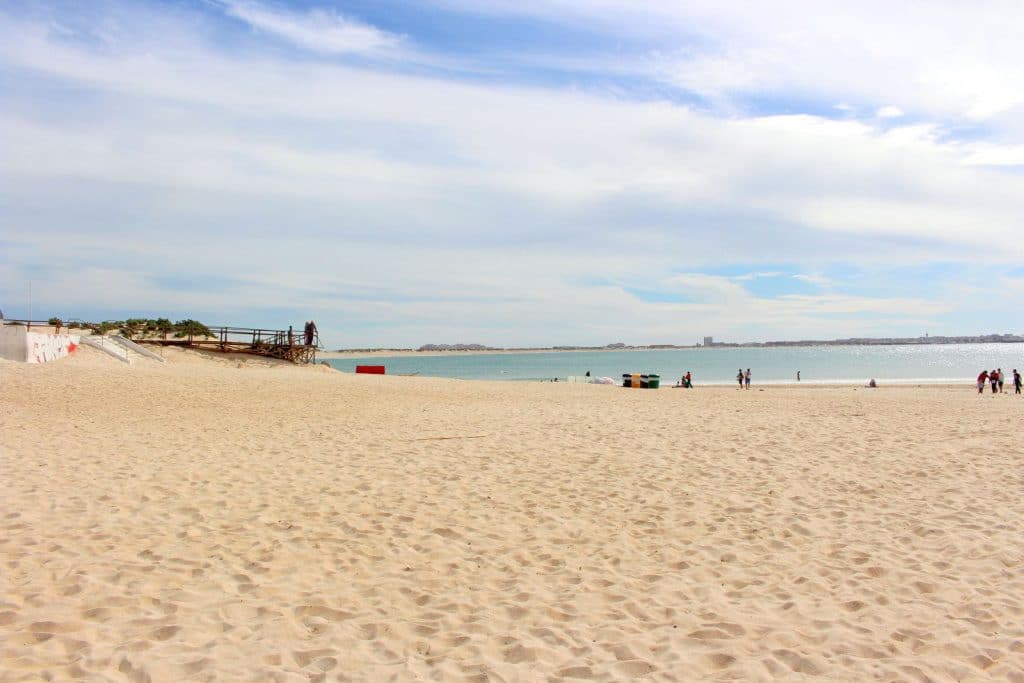
Peniche was seen from above
Places of interest to visit Peniche
Peniche is a small town located an hour’s drive from Lisbon. It is famous for its beaches, relaxed lifestyle, and the Berlengas, a group of small islands
Peniche is a surfer’s paradise and a great place to relax and escape the urban centers. The reality around Peniche is very calm, and the weather “slows down.”
Vacations in Peniche is the right choice for those looking for a beautiful place, nature, beach, and a relaxed atmosphere with friendly people.
The Peniche Fortress
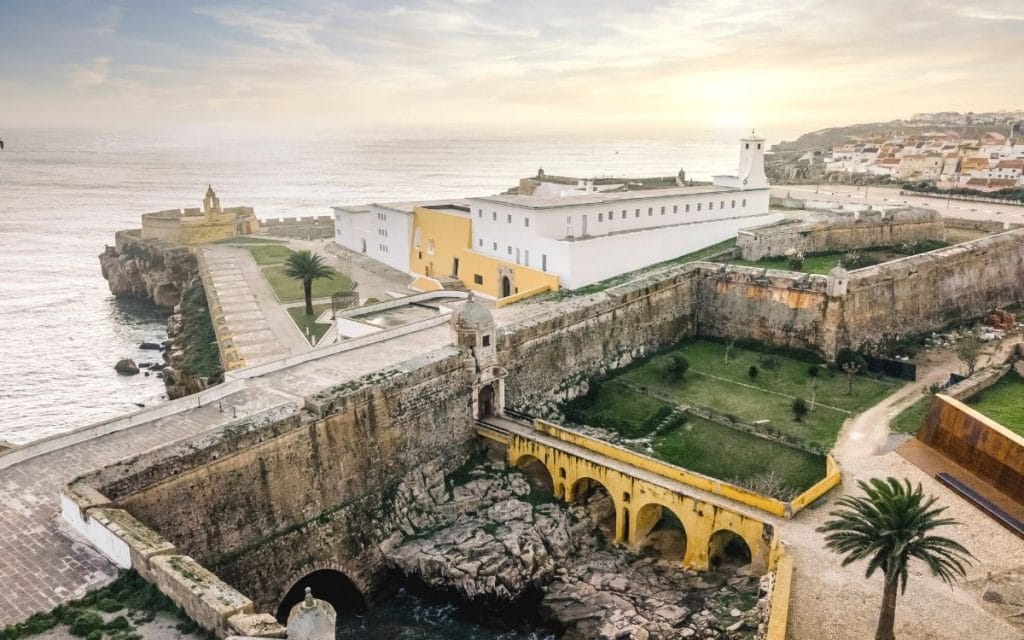
The Peniche Fortress was built in 1557 by order of D. João III, who tried to provide the port of Peniche with effective defenses and keep the area safe from frequent attacks by pirates and corsairs.
His star-shaped plan corresponded to the latest advances in military architecture, offering an adequate structure to defend against artillery attacks.
Curiosities of the Peniche fortress
In what year was the Peniche fortress built?
The Peniche fortress began to be built in 1557 by order of D. João III of Portugal. It remained a coastal defense stronghold until the late 19th century, having played an active role during the Peninsular War (Napoleonic invasions).
What is the other name of the Peniche fortress?
Peniche Fortress, also known as Praça-forte de Peniche, is the most appropriate name for this building.
Is the Peniche fortress a national monument?
Yes, the Praça-Forte de Peniche has been a national monument since 1938.
Where is the Peniche Fortress?
The Peniche fortress is located on the southern slope of the Peniche peninsula, between the Furninha cave and the city’s fishing port.
What is in the Peniche fortress?
There are currently two museums inside the Peniche Fortress: the Museo de la Resistencia and the Museo de la Ciudad. Since its deactivation as a military structure, it has been transformed into a prison, with particular emphasis on the Estado Novo period, when it housed political prisoners.
Photo Gallery
Photographs of the Peniche fortress in Portugal.
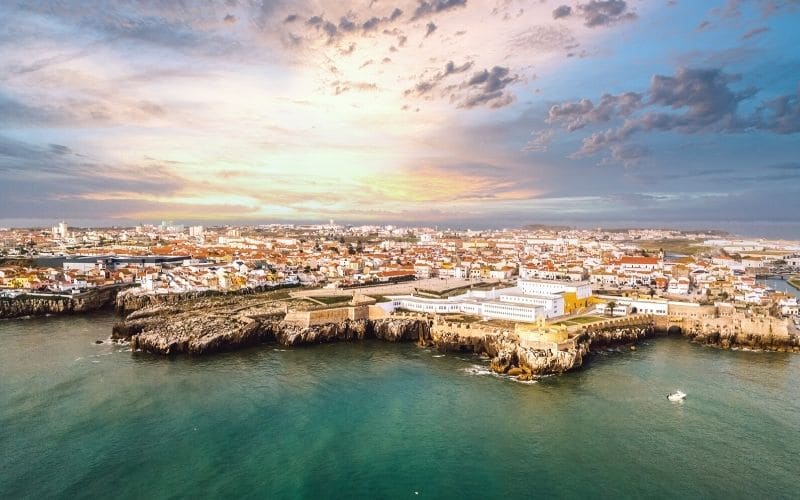
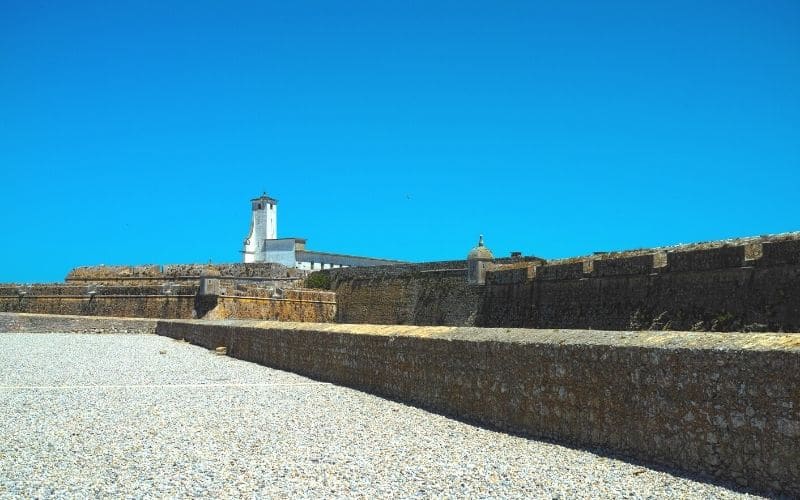
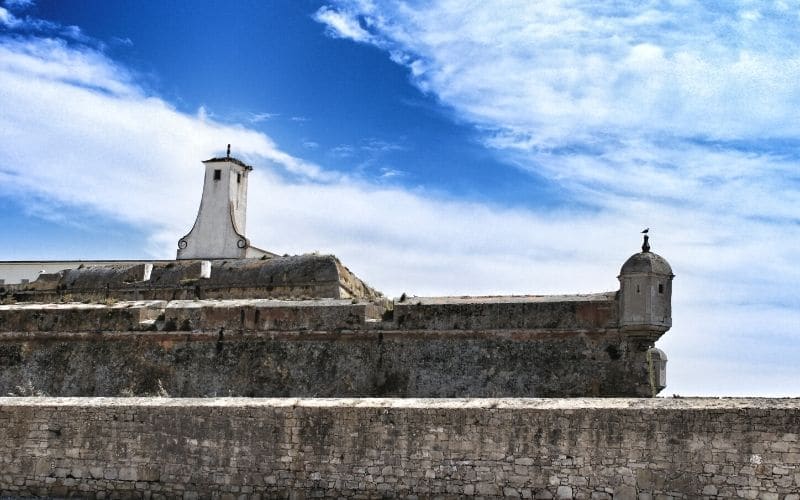
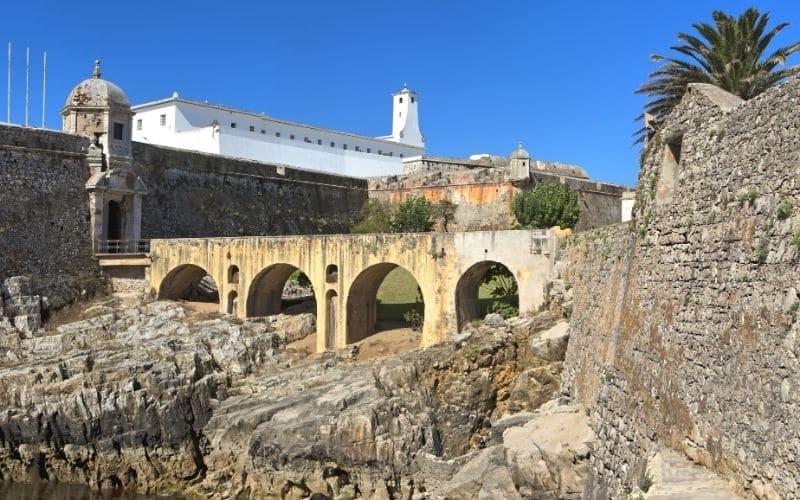
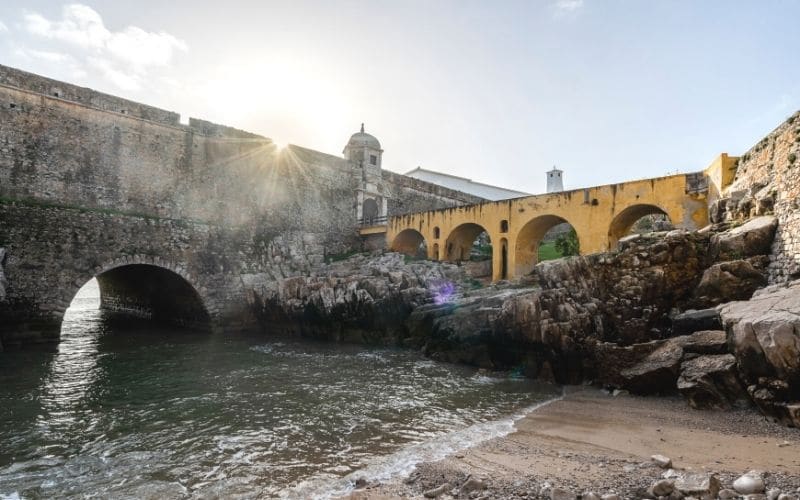


Map
Cabo Carvoeiro in Peniche

Cabo Carvoeiro, the westernmost tip of Europe north of Cabo da Roca, is only two and a half kilometers from the center of Peniche, so you can easily walk there.
Since memory, Cabo Carvoeiro has represented a threat to navigation, with innumerable cases of ships crashing against its vertical walls.
As in many other places, there are dark legends that tell of men who dedicated themselves here to the mixed signal that caused shipwrecks that were then methodically looted by their creators.
The lighthouse construction in 1790 will have reduced the accident rate, but Carvoeiro will always have a prominent role in the tragic-maritime history.
Today it is a very popular place for visitors who move to the top of this peninsula, which rises to about 25 meters above sea level, from where you can enjoy the spectacular sunset. Geology lovers will be fascinated by the strange karstic formations found in this layer, where the Furninha Cave is also distinguished, where traces of human occupation were discovered in Prehistoric times.
Municipal Museum of Peniche
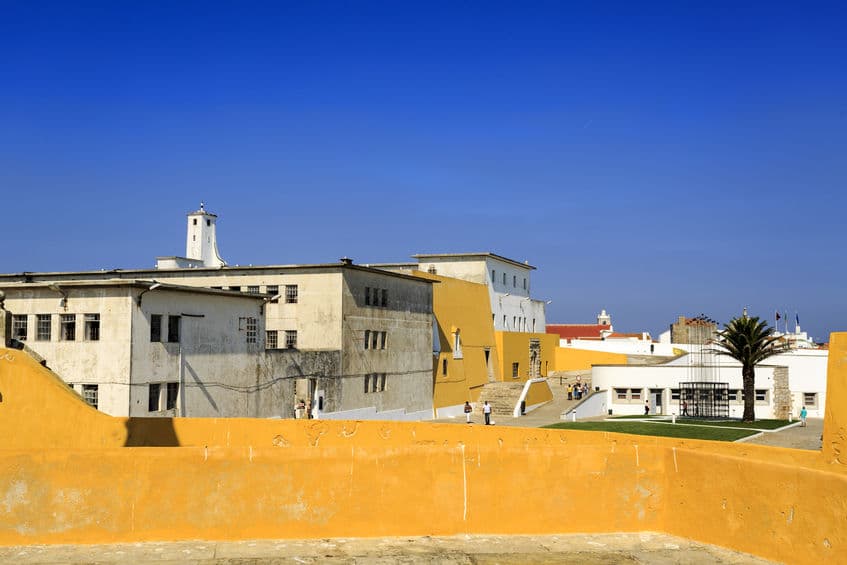
The Municipal Museum of Peniche is truly multifaceted.
It is installed in the old Peniche fortress, forming part of his collection dedicated to the fort itself and to the different roles it had played throughout history, with particular emphasis on the period when it was a political prison, during the Estado Novo.
Therefore, it is possible to visit the cells that at that time were used to keep opponents of the regime, which were marked “as natural” as they were.
The archaeological section displays multiple artifacts, emphasizing the finds from the Neolithic period that were collected in the Furninha Grotto and the pieces collected from the many shipwrecks that occurred in the Peniche area.
There is an ethnographic component, with a natural emphasis on fishing activity and associated traditions, uses, and customs.
Church of Mercy in Peniche
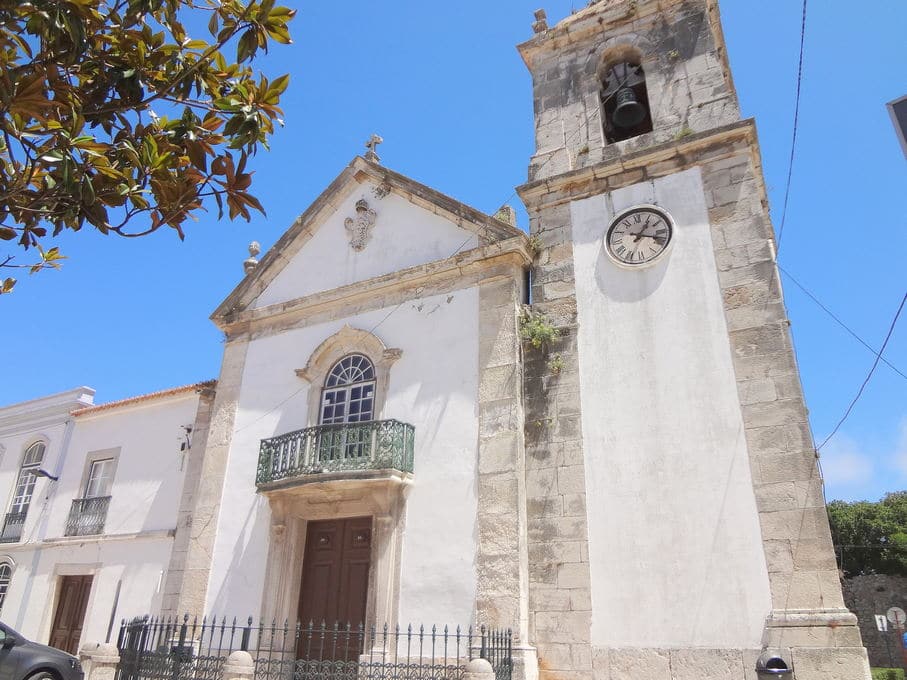
This church is owned by Santa Casa da Misericórdia in Peniche and was built in the 17th century, attached to the old hospital complex managed by that institution.
Its interior is especially beautiful, highlighting the original tile panels created when the temple was built, oil paintings, some on large canvases, and the decorative motifs found on the ceiling.
These illustrated scenes from the life of Christ were created jointly by the artists Pedro Peixoto, António Rodrigues Raieta, António da Costa e Oliveira, and Baltazar Gomes Figueira.
A special note for the five canvases by the painter Josefa de Óbidos that are in this church.
Church of San Leonardo in Peniche
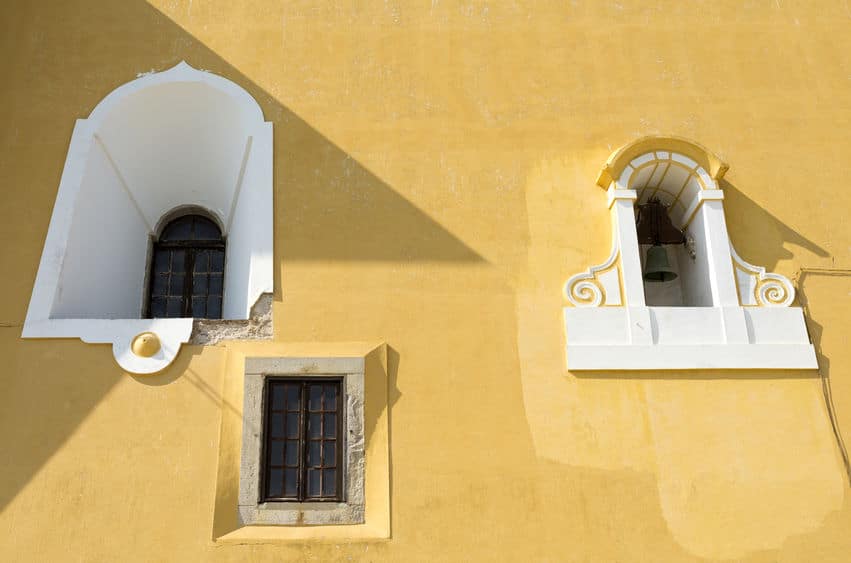
This church radiates history. It is located in the village of Atouguia da Baleia, the region’s principal maritime port in the Middle Ages. Still, the church is a shining testimony of those times of vanished glories.
It was built in the 13th century, in pure Gothic style, having been the burial place of the most powerful families of the nobility in that area.
Inside, you can see a rare bas-relief dating from the 14th century and a Renaissance painting of Saint Leonardo.
Bobbin lace museum and school in Peniche
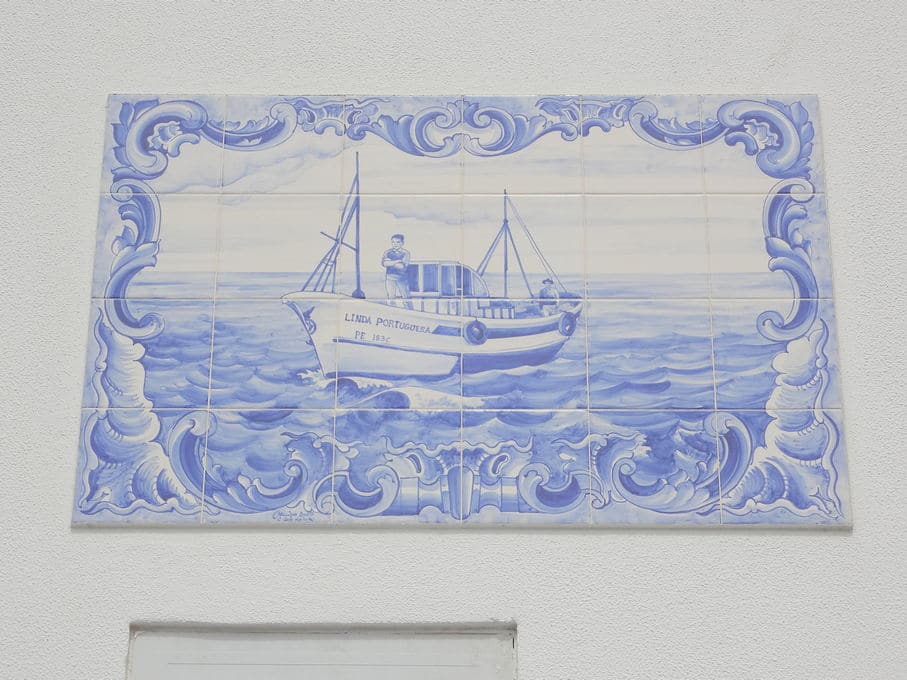
The Bilros Lace Museum was inaugurated in 2016. It has a small but well-organized exhibition, the visit to which is prepared through a short documentary of approximately four minutes.
It should be noted that Bilros lace incorporates a textile production technique that has been practiced in these areas for approximately 400 years.
Despite the difficulties brought by modern production processes, Bilros’ income has survived, and the municipality of Peniche sponsors a school.
It was in 1987 that the Escola da Renda de Bilros was formed, which currently brings together about a hundred income teachers who work to pass on their knowledge to the new generations. The preservation of this centuries-old art seems to be guaranteed.
Peniche fishing port
The essence of Peniche is found here. Before the arrival of tourists and the discovery of the waves of Peniche by the international community of surfers, fishing was the undisputed queen.
Peniche is still a fishing village despite its reduced visibility and importance, and you can see the sea from the fishing port.
The essence of Peniche is found here. Before the arrival of tourists and the discovery of the waves of Peniche by the international community of surfers, fishing was the undisputed queen.
Peniche is still a fishing village despite its reduced visibility and importance, and you can see the sea from the fishing port.
Around it is cafes and restaurants, some entirely local, offering a traditional atmosphere. If you look around, you can see traces of the ancient walls of the citadel, on which palm trees have been planted ever since.
Church of São Pedro in Peniche
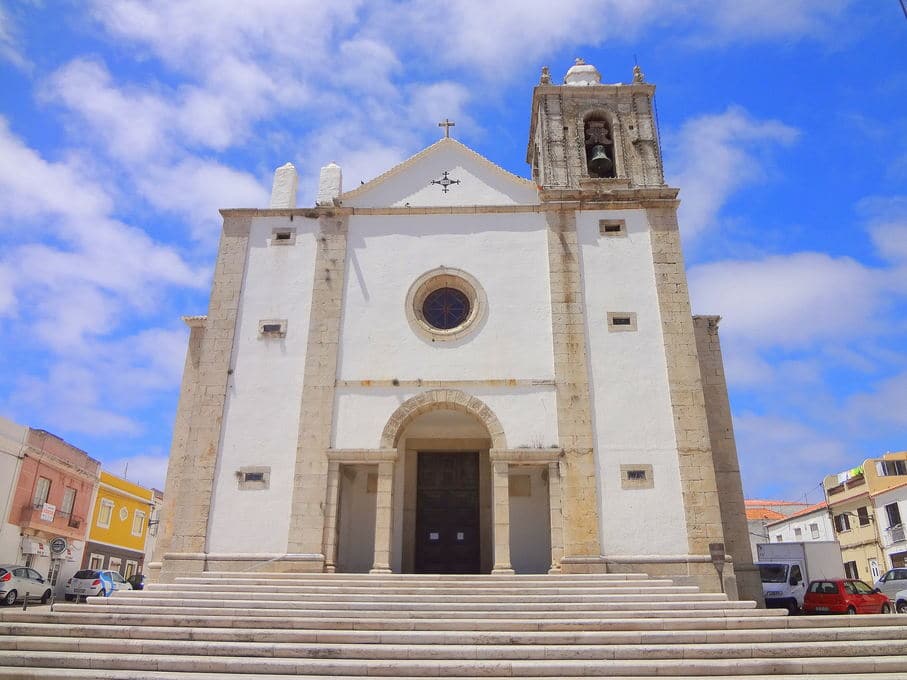
Perhaps the most relevant Catholic temple in Peniche, the São Pedro church, was initially built in the 15th century, but it will have been completely renovated during the 17th and 18th centuries.
The art that can be seen on its seal is distinguished, with themes dedicated to São Pedro. This is the case of the 18th-century paintings representing important moments in the saint’s life, such as Quo Vadis or the miraculous catch, a subject particularly appropriate for the Peniche context.
Map with places to visit
If you are looking for a short trip from Spain, Peniche is a great option. There are some lovely places in the city where you can experience a slow and relaxed lifestyle. The landscapes around Peniche are incredible. The food is delicious and affordable. You will not regret visiting Peniche. On this map, we list all the places of interest in Peniche.
What to visit in the region
In addition to the points of interest, travelers who spend a couple of hours here can visit some of the region’s sights, especially if they have their vehicle.
In fact, Peniche is located in a region very rich in attractions, highlighting the medieval city of Óbidos, with its castle, picturesque streets, and the atmosphere of other times. Considering the options less than an hour’s drive away, the list of places to visit is extensive. There are so many possibilities and beautiful towns that it is impossible to offer a complete list here.
- Lourinhã has an excellent dinosaur park, where you can see footprints carved in the rock of these giant animals from the past.
- The beautiful beach of São Martinho do Porto is very close, but if you prefer the mountain environment, you should climb to the top of Montejunto mountain and enjoy the beautiful views from there..
- The Alcobaça Monastery, a UNESCO World Heritage Site, is within easy reach, as is the equally distinguished Batalha Monastery located a little further away.
- Caldas da Rainha is very close, and you may want to visit the historic center of Torres Vedras, Rio Maior, and even Santarém.
- Foz do Arelho is immediately north of Peniche and continues in that direction. You will reach Nazaré, where, if you are lucky, you will see the giant waves that provided the American Garrett McNamara with a world record for surfing the highest wave there. With about 24 meters, this mark is always surpassed by other surfers.
Tours from Peniche
You can book online to facilitate your trip to Berlengas.
Frequent questions
Where is Peniche in Portugal?
Peniche is located on the coast of the Leiria district in central Portugal. Peniche is close to Lisbon, 100 km and 262 km from Porto. Similarly, Peniche is close to Coimbra, 157 km away.
Today Peniche occupies the central position of an isthmus, but it is believed that until the 17th century, there was an island there, which slowly began to connect to the mainland by a spit of sand. This was submerged at high tide but allowed passage at low tide.
Located in Cabo Carvoeiro, with its typical white churches, Peniche attracts huge numbers of tourists throughout the year. Walking through the historic center of Peniche transports us through its history, in which time moves more slowly as we visit this beautiful Portuguese city.
Where to sleep in Peniche?
There are many accommodation options in Peniche. From 5-star hotels to simpler pensions. There is also a wide variety of guest houses and hostels. See the Peniche hotels page.
How to get from Peniche to Berlengas?
Peniche is the base city to take the boat to the Berlengas archipelago. Getting from Peniche to Berlengas is very easy. Go to the embarkation port with your ticket and wait for your ship to arrive.
How to get to Peniche from Lisbon?
Getting to Peniche from Lisbon can be done with your own car via the A8 (100 km away). You can also take a bus, which is certainly the cheapest way to get to Peniche. Regular buses run between Lisbon and Peniche throughout the day. Rede Expressos / Renex leaves from the Sete Rios terminal (blue metro line). The journey between Lisbon and Peniche takes approximately 1 hour and 30 minutes. See the page on how to get to Peniche.
Why is it called Peniche?
The meaning of the name Peniche seems to originate from the Celtic word “feather,” meaning “head,” which in turn influenced the Vulgar Latin word “peninsula.” Some say that “Peniche” originates from the word “Phoenix.” This name alludes to an ancient settlement on the island of Crete in Greece, whose geography was similar to the island of Peniche that used to exist.
What is Peniche?
Peniche is a coastal city on the mainland of Portugal. Peniche has one of the largest traditional fishing ports in Portugal and is an important center for maritime-tourist activities, especially for visiting the Berlengas. Peniche is a Portuguese city in the district of Leiria, located in the western subregion, in the province of Extremadura, and the central region of Portugal. It became a village in 1609 and a city at the end of the 20th century.
